I want to spend this weekend preparing for next week’s game development posts, so there won’t be a [How to Draw] post this week.
It will instead be replaced by this post – a review of Stonehouse’s Anatomy, by Korean illustrator Seok Jung Hyun (Americanized as “Jeonghyun Seok”).
Upon its arrival at my doorstep this past month, Stonehouse’s Anatomy has become my go-to source of anatomy literature, as well as a source of consistent entertainment.
However, although this book is excellent, it is not without flaws. There are certain elements of this book that I think are worth mentioning, since these details may affect one’s enjoyment while reading the book.
Through this review, I hope to enlighten you on the experience of reading this book from the perspective of an art and anatomy student.
!!! R E M I N D E R !!!
All photos taken for this post were taken by me, from my copy of Stonehouse’s Anatomy. Obviously, I did not draw any of these pictures.
General Introductions
Stonehouse’s Anatomy, written by Seok Jung Hyun, is the English translation of a Korean ‘anatomy for artists’ book, originally released in 2017.
First things first, here is a link to the book’s store page [Stonehouse’s Anatomy Store Page] on the Superani website. Seok Jung Hyun is a Superani artist, so his products can be found on their website.
Stonehouse’s Anatomy is $80, which is a price that I consider to be perfectly reasonable. Please keep in mind that this book took ~10 years for Seok Jung Hyun to write and illustrate, and consists of ~700 pages of excellent instruction. All things considered, $80 is a very fair price.
If you’re interested in a succinct description of the book, I’d suggest reading the synopsis they provide on the store page. My goal will be to describe and elaborate upon details not present in the synopsis.
The Good
Readability and Humor
Right off the bat, this book is an extremely easy read, which is pretty important, since Stonehouse’s Anatomy is around 700 pages in length.
This book is NOT written like a traditional anatomy textbook. Seok Jung Hyun makes constant use of supplementary visuals to make the reading process more enjoyable. As stated by the website’s description,
“You should be able to enjoy [the book] with a nice drink or a snack, as you would with an entertaining work of fiction” (Superani US).
The author chronicles his experience learning about the anatomy of hands, in order to write a chapter about them in his book. Through these doodles, we are granted a personal look into the author’s learning experience and mindset. In addition, the appealing cartoon-style maintains the reader’s interest.
I think the book is very successful in this regard. Stonehouse’s Anatomy has a great sense of humor, borne from the artist’s clear interest and passion about human anatomy. The lighthearted tone of the book keeps things interesting, while also making the learning process fun.
The first of these two photos displays the three main recurring side characters, along with the author, Seok Jung Hyun, who is wearing a black shirt. These side characters represent emotions experienced throughout the artistic learning experience.
The big burly man in the light blue shirt is my favorite of the three, as I relate very closely to his frustration and feelings of being overwhelmed.
I consider these to be positive traits, but those of you who are interested in more medical (which is to say, more in-depth and surgical) analyses of anatomical structures, may consider this to be a strike against the book.
While this book does touch on information more relevant to medical fields of study, Stonehouse’s Anatomy is an ‘anatomy-for-artists‘ book first, and an ‘anatomy textbook’ second. This book is more concerned with teaching applicable artistic knowledge of anatomical information, and in that regard, the book is very successful.
(Besides, there are tons of medical anatomy textbooks out there already. Books like Stonehouse’s Anatomy are pretty uncommon.)
Quality of Information
Of course, although the book has a sense of humor, it is still focused on providing an informative experience. Once again, this is an area of the book I consider to be quite successful.
The book is extremely detailed in the right places – this is what I mean by “an anatomy-for-artists book.” In art, it’s not necessary to have an exceedingly nuanced understanding of human anatomy. If you’re a surgeon, understanding the various muscle types to a ridiculous level of detail is extremely beneficial, and often necessary, so medical anatomy textbooks spare no expense when it comes to detail.
Stonehouse’s Anatomy provides excellent breakdowns of various bone and muscle groups, including tutorials for drawing certain body parts, often from more than one angle. The end of the book (as well as most chapters and/or sections) culminate in finished paintings, either of full figures, or of the specific body part(s) being discussed.
These finished artworks are then given an x-ray treatment, where Seok provides muscular/skeletal breakdowns of each painting, in order to eliminate any and all ambiguity on the student’s end. This is EXTREMELY useful, as there is no guesswork or interpretation needed on the part of the student. Since muscle visibility varies between body types, this is an important learning tool.
Teaching Styles
Korean style(s) of teaching are very clear throughout this book. In my (relatively limited) experience with Korean instructions, I’ve found that their methods tend to revolve around forming a logical, foundational understanding of function, and applying visual information to that knowledge. This makes things much easier to learn and remember.
I’ve found that Koreans also take a relatively lighthearted approach to learning – that is, learning is treated as a fun activity, not a tedious act of work.
Please keep in mind, I am generalizing somewhat in my description, here – not every Korean teacher will utilize these methods. I’m just describing my experiences.
This is the style of teaching I have attempted to implement through my educational blog posts (likely to a much lesser degree of success, given my relative inexperience.)
Summary of the Good
Stonehouse’s Anatomy is an easy read despite its length, filled to the brim with humorous supplementary visuals, which aid in making the learning experience more seamless and enjoyable.
The information provided is extremely solid, giving artists a strong functional understanding of anatomy, and building visual information onto that foundation.
While some may find the book to be lacking in medical detail, I personally believe that focusing on knowledge applicable to art allows the book to fit into a less saturated market.
The Bad
Although Stonehouse’s Anatomy is certainly an excellent book, it is not without its flaws.
Cultural Differences
A portion of the book’s description says,
“Please understand that there may be some misunderstandings or difficulties when reading some of the author’s personal thoughts and examples that he uses. We understand that this stems from a cultural difference between the author, who is Korean, and a wider variety of readers’ backgrounds” (Superani US).
I actually disagree with this point. I’ve found that any cultural differences are practically unnoticeable – that is to say, they do not negatively affect the readability of the book, nor the ease of interpreting Seok’s examples.
The examples provided and methods of instruction used are universal, in my opinion. Good teaching is good teaching, regardless of cultural boundaries.
HOWEVER, there are problems related to understanding the content of the book, which leads me to the one and only glaring flaw with Stonehouse’s Anatomy.
Typos and Mistranslations
Stonehouse’s Anatomy is, as stated previously, the English translation of a Korean book released in 2017. As such, it is prone to typos and/or mistranslations on occasion. Unfortunately, in the case of Stonehouse’s Anatomy, these are extremely common.
To be clear, I am not referring to basic grammatical and/or punctuational errors, although those are present in the book, as well. I am a fluent English speaker. I am more than capable of reading through simple misspellings. Such errors are not what I’m referring to when I say “typos.” I am instead referring to legitimate mistakes. Allow me to give some examples.
Mislabeled Information
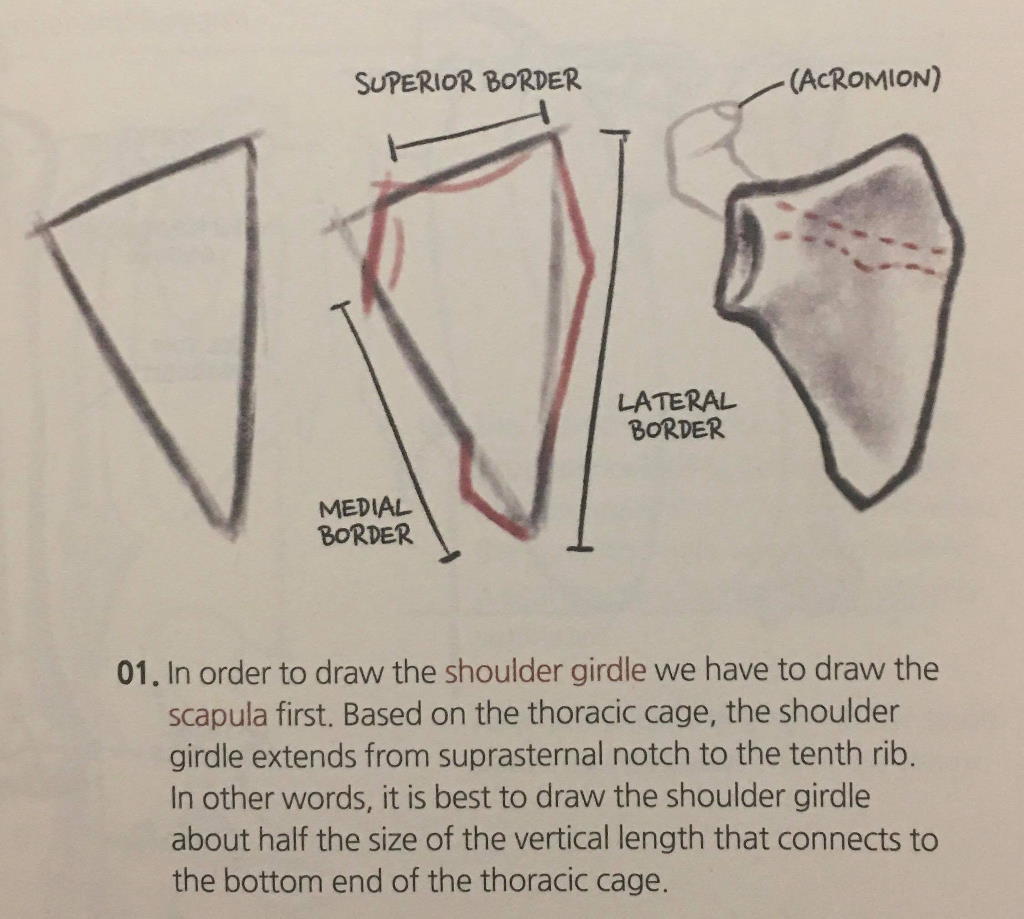
On page 342, the medial and lateral borders of the scapula are mislabeled. This mistake defeats the purpose of using terms related to anatomical position, which exist to eliminate any and all ambiguity related to anatomical descriptions. In the case of the scapulae, whose appearance(s) are somewhat symmetrical, this might confuse readers. In this case, I used the location of the glenoid cavity, which is always on the lateral border, to determine the correct terminology.
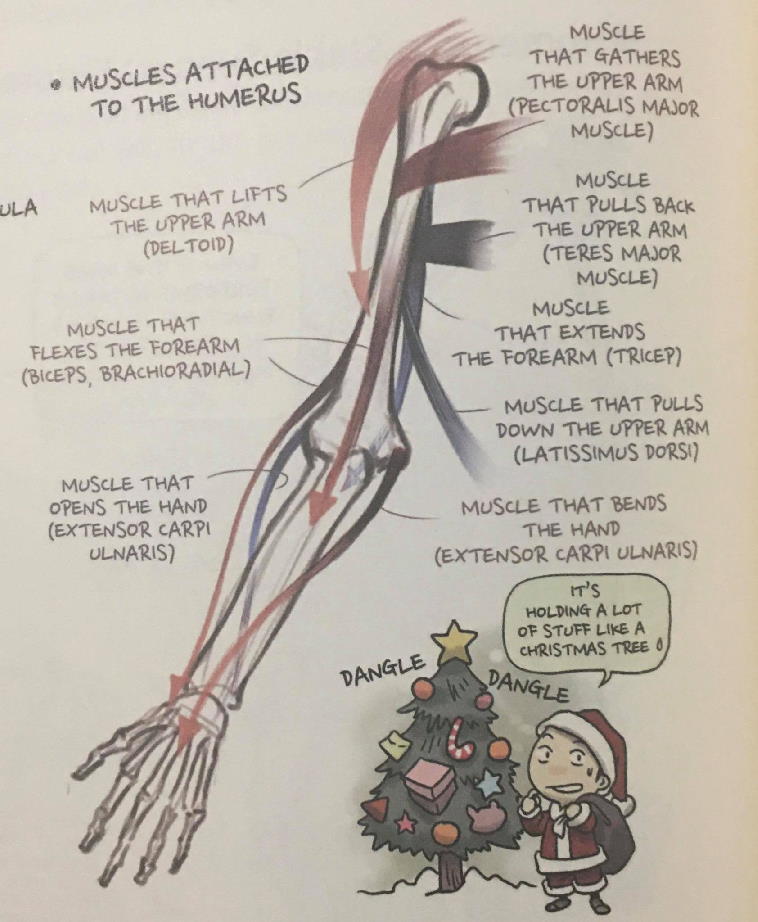
On page 307, the extensor carpi ulnaris is labeled twice. Obviously, there is only one of these muscles per arm. The rightmost extensor carpi ulnaris, in this case, is actually the flexor carpi ulnaris. These muscles perform different actions (since one is a flexor, and the other is an extensor), so this distinction is fairly important.
On page 354, the deltoid is described as a multipennate muscle, while the cited reference page (page 59) describes the deltoid as a convergent muscle. Deltoids are, in fact, multipennate muscles (a term which can apparently imply a convergent structure – something which is not touched on in the book, and would be worth elaborating upon). Unlike the previous two examples, which I was able to figure out fairly quickly through the use of context clues and my pre-existing anatomy knowledge, I had to google this one.
Even now, I’m not sure if one term is more accurate than the other, or if they’re both equally accurate descriptions of the deltoid’s shape.
Scuffed Translations
Though few and far between, there are times when the translation is so bad, thoughts and/or entire sentences become almost completely incomprehensible. The only glaring example I’ve run into thus far is on page 355. Referring to the triceps brachii, the book states,
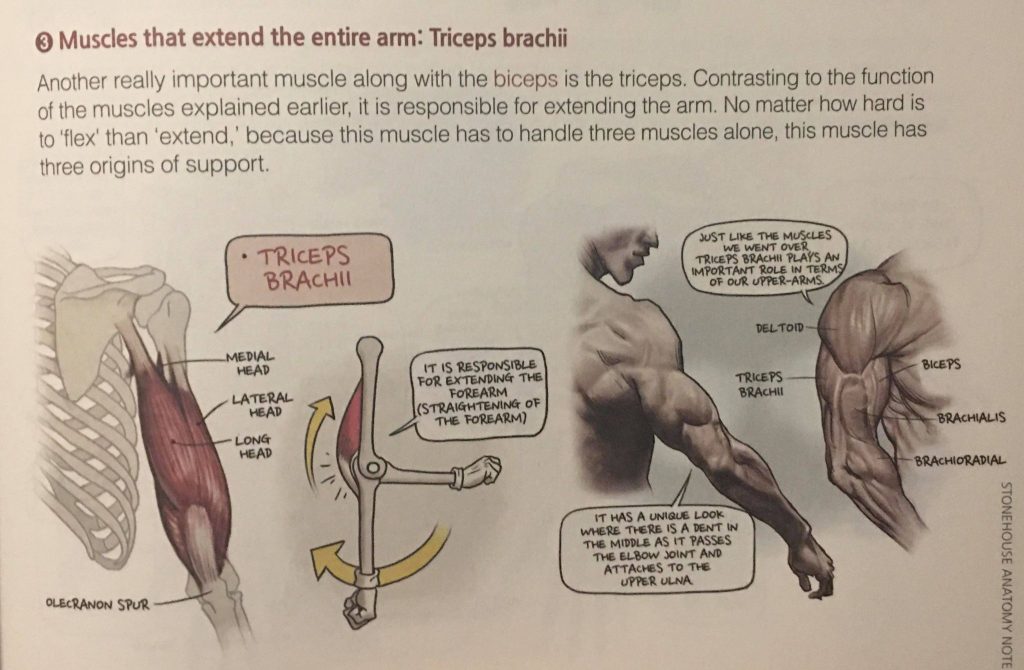
“No matter how hard is to ‘flex’ than ‘extend,’ because this muscle has to handle three muscles alone, this muscle has three origins of support” (Stonehouse’s Anatomy, 355).
This is almost entirely nonsensical, but I think can at least understand what Seok is trying to get across, here. Although there are three muscles involved in arm/forearm flexion, there is only one muscle involved in arm/forearm extension – your triceps.
Because flexion is a more strenuous movement than extension (it’s harder to flex your arm than it is to let it rest at your side), only one muscle is necessary for extension. With that in mind, the tricep covers the roles of three muscles, and so it comprises three segments (hence the “tri” in “tricep”).
That said, I can’t be certain I’m properly interpreting the author’s message here, and I was extremely confused upon reading that sentence for the first time.
Again, situations like this, where the sentences become almost entirely incomprehensible, are fairly uncommon.
I’m not sure if these mistakes were present in the original text (i.e. they are the fault of the author), or if these typos are present only in the English text (i.e. they are the fault of the translator).
Regardless, the content of the book is so good, it’s easy to overlook these mistakes, but you must pay attention while reading. There are some extremely noticeable errors throughout this book.
Using Typos to your Advantage
In any case, whether or not these typos are a distracting flaw is largely up to interpretation. In my experience, unless these errors lead to utterly indecipherable text (as highlighted by page 355), I do not consider them to be a problem.
In fact, I consider these typos to be a good thing, in some cases. I realize that probably sounds ridiculous, so allow me to explain.
For one thing, some of the errors are fairly obvious. Since I already knew what “lateral” and “medial” meant by the time I reached the section related to the scapula (shoulder blades), it was immediately apparent to me that the book had mislabeled the two sides.
The same goes for the mislabeled extensor carpi ulnaris. I assumed there was only one of these muscles (per arm), and, based on the context clues of the diagram, assumed one of the mislabeled muscles to be a flexor. A quick google search confirmed my suspicions.
In my opinion, the most important aspect of these typos, is that they reward readers for paying constant attention. You CANNOT read this book mindlessly while still receiving the full benefits of its instruction – you MUST pay attention. In addition, these typos reward readers who question the book’s instruction, and trust their intuition.
Plus, if I see something incorrect, assume it to be a mistake, and do a supplementary google search to confirm the correct information, I’m more likely to retain that information. These mistakes encourage (and sometimes force) me to do further research, reinforcing my pre-existing knowledge, while helping me retain new information.
Summary of the Bad
Although I have not experienced any confusion related to cultural barriers, Stonehouse’s Anatomy is littered with typos and mistranslations, which might negatively affect the reading experience of some students.
In the end, I think these typos add to the book’s charm. Just keep in mind that if you purchase this book, you must pay careful attention while reading it – something which is fairly easy to do, since the book is so much fun to read.
The Verdict
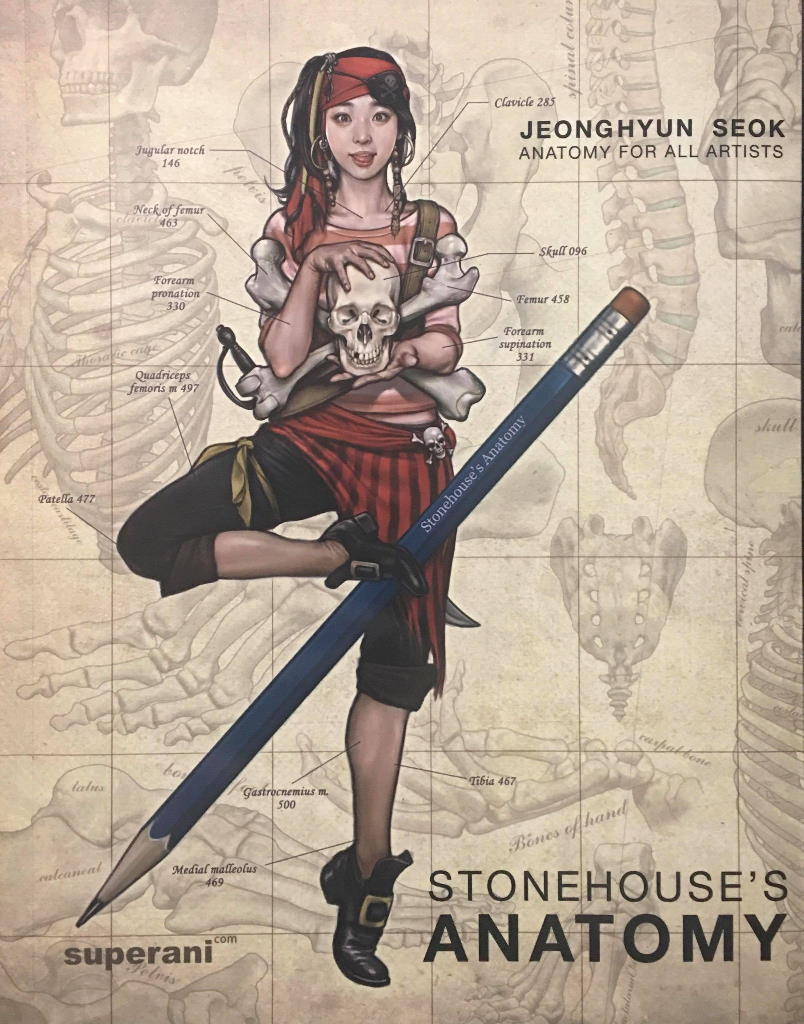
I’m not going to give this book a numbered score. For one thing, I’m just not comfortable doing so – I don’t think I could summarize my complex opinion of the book into a number between 1 and 10.
For another, I haven’t actually finished the book yet, so I think giving the book a numbered score would be disingenuous, since my opinion would be incomplete, and therefore untrustworthy.
I’ll put it this way: if you enjoy my style of teaching, and you’re an artist (or just a curious person in general), who is interested in learning about human anatomy through a method of instruction similar to my own, from an artist who is significantly more experienced and knowledgeable than I am, this is a book worth purchasing.
Of course, it is rather expensive – in the sense that I doubt most college students have a spare $80 they can throw around – but I don’t consider the price to be unreasonable, given the book’s excellent quality. (The price per page comes out to ~15¢).
In my opinion, the knowledge found in this book is priceless, and well worth it for anyone interested in learning about human anatomy. Through Stonehouse’s Anatomy, Seok Jung Hyun has provided an enjoyable read for artists and non-artists alike.
As always, thanks for reading.
Sources
- Seok, S. J. H. (2020). Stonehouse’s Anatomy (1st ed.). Superani.
- Superani US. (n.d.). [Pre-Order] Stonehouse’s Anatomy. Retrieved March 17, 2021, from https://superanius.com/products/stonehouse-anatomy-note
Disclaimer
All information in these posts is my own words, unless explicitly stated otherwise. None of this information is quoted, nor paraphrased, unless explicitly stated otherwise. Any similarities between my own words, and the informative sources/hyperlinks provided is purely coincidental, unless explicitly stated otherwise.
In any case where I am using someone else’s words (or imagery), the source will be cited internally, with a link to that source provided either within the internal citation, at the end of the post under “Sources,” or both.


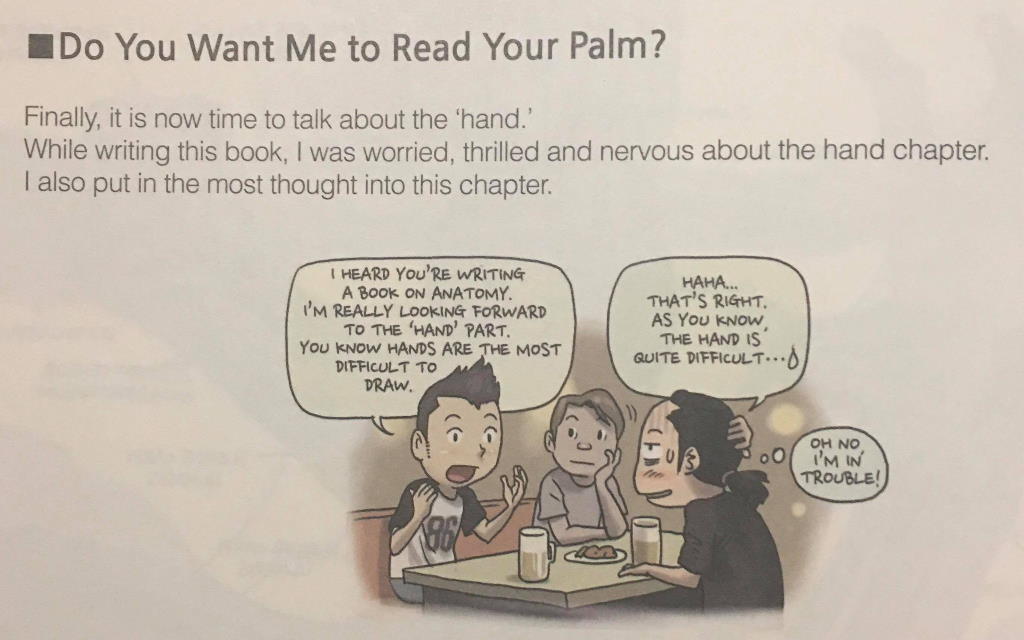
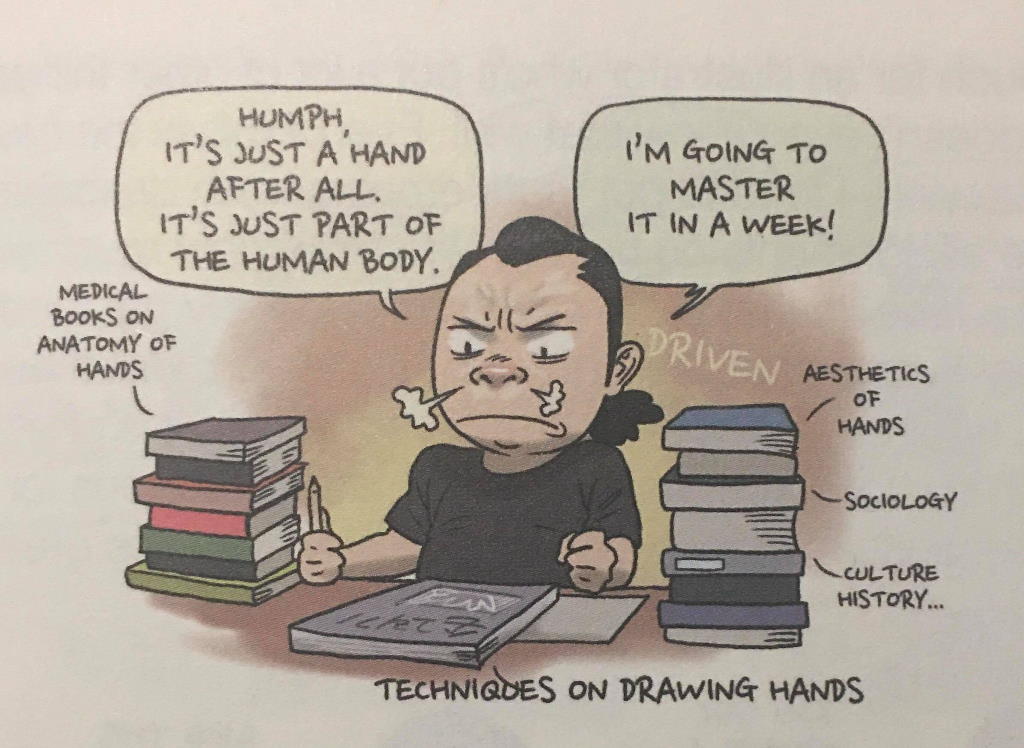
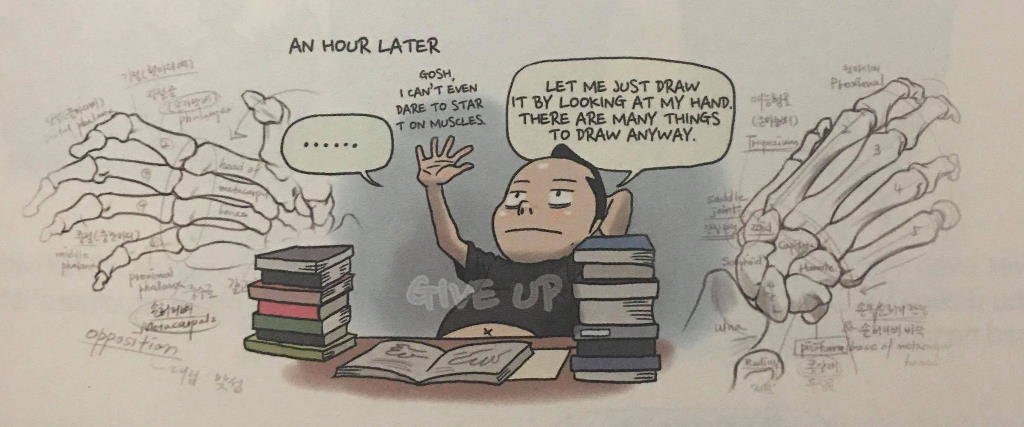
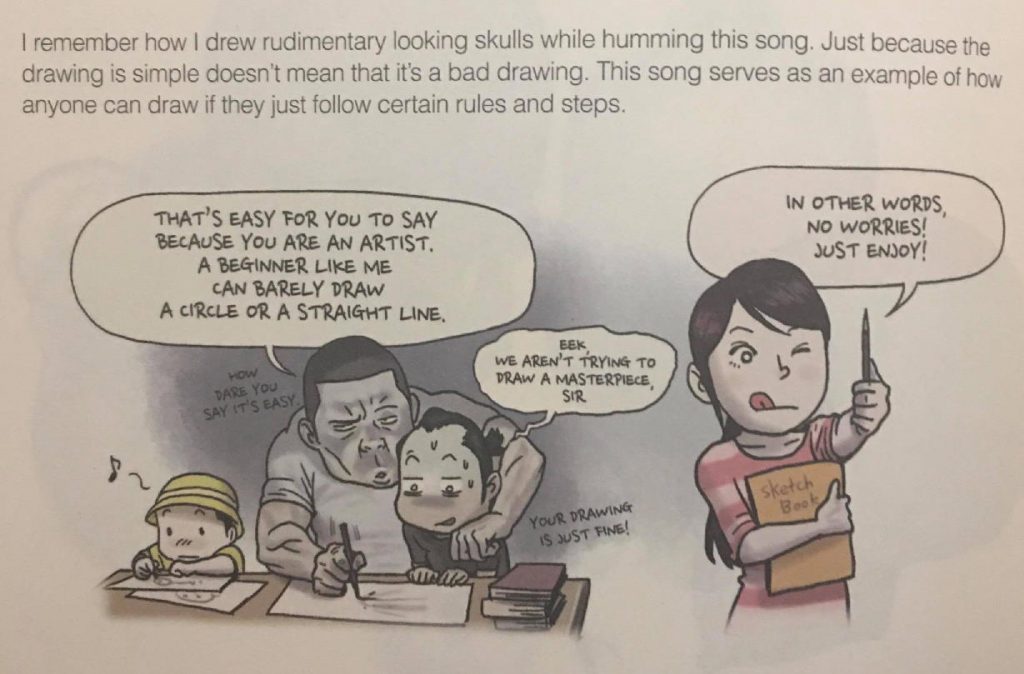
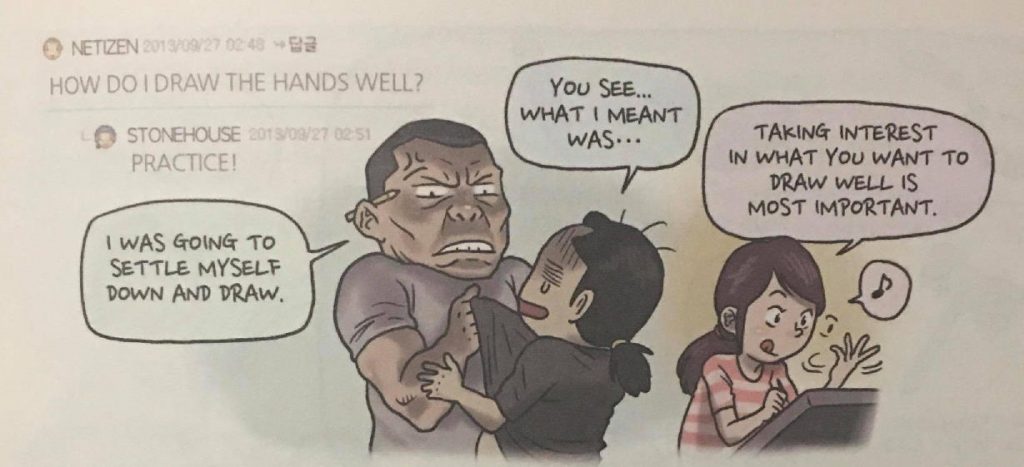
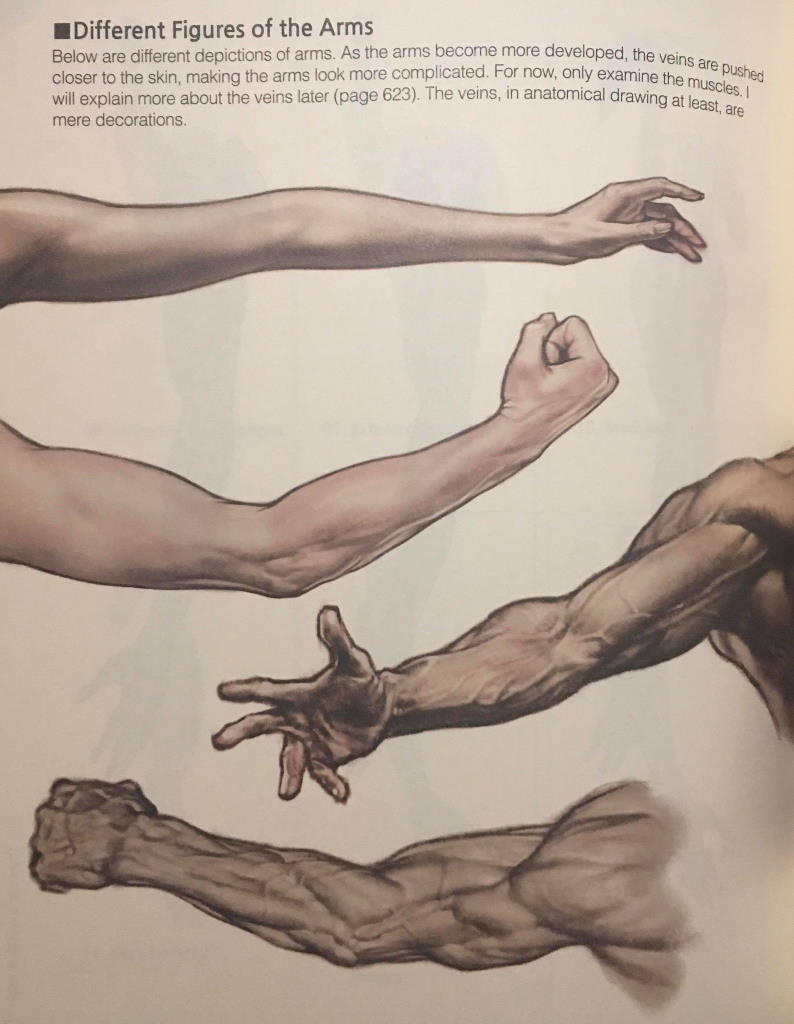
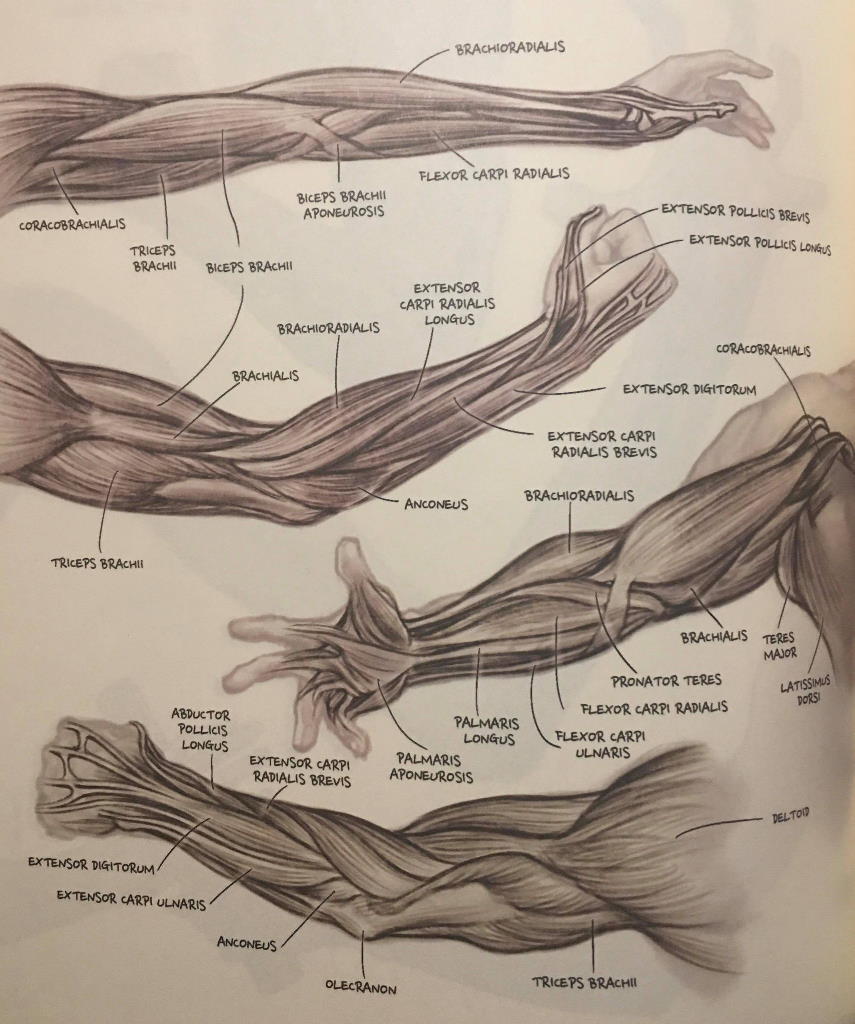
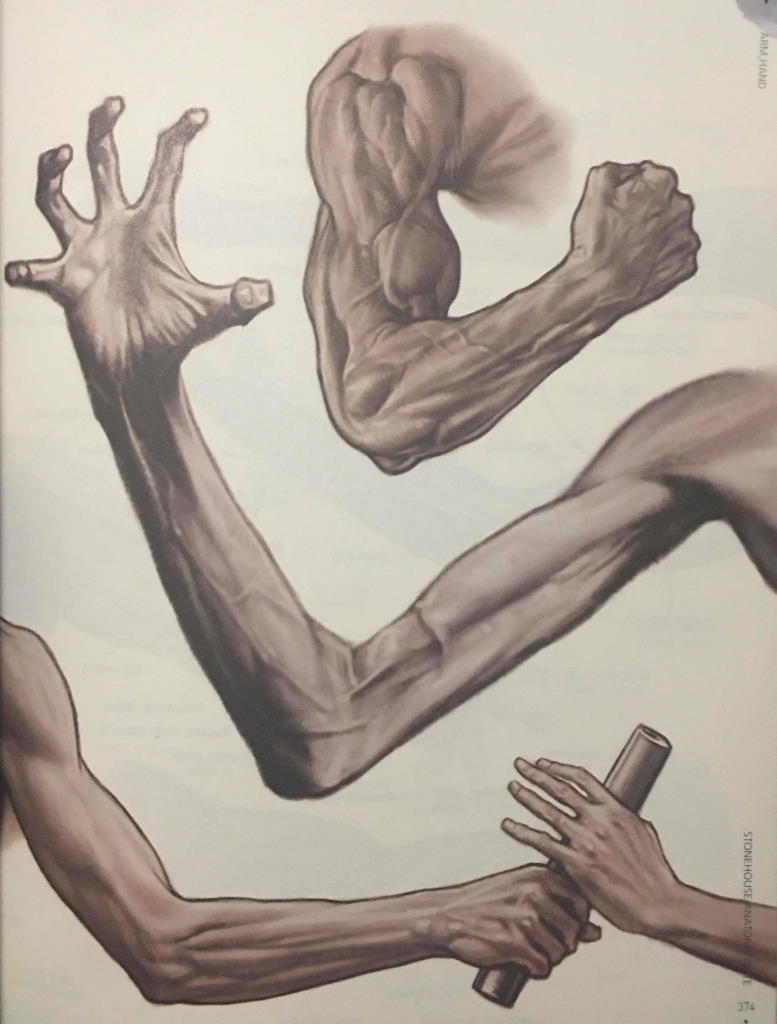
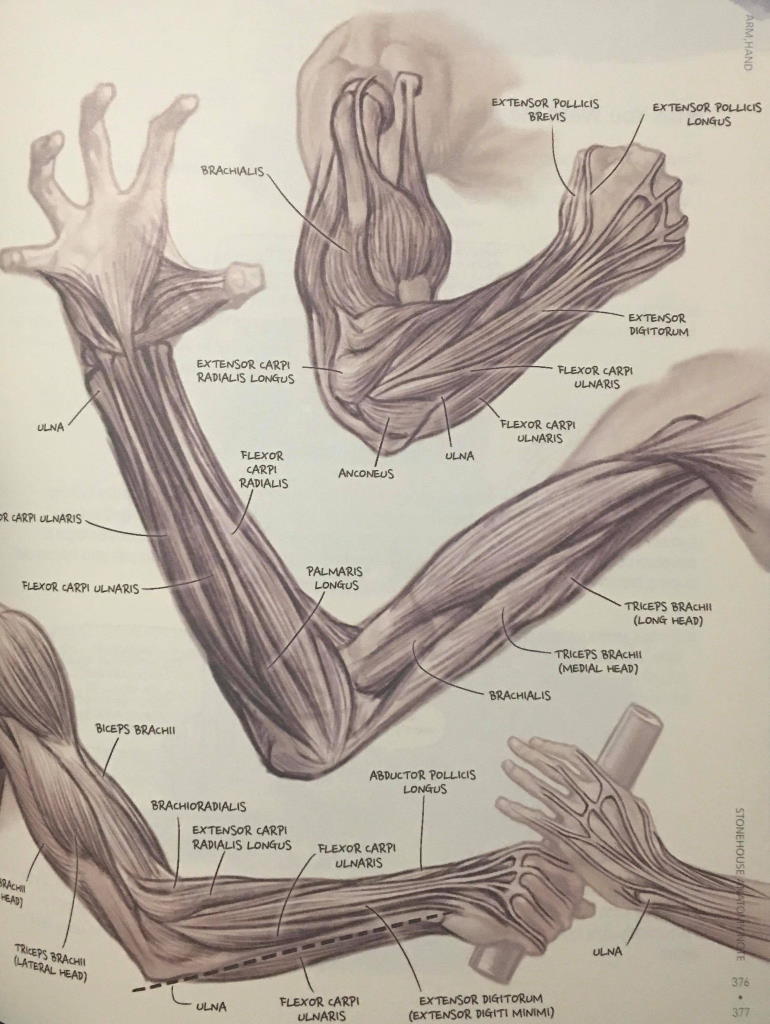
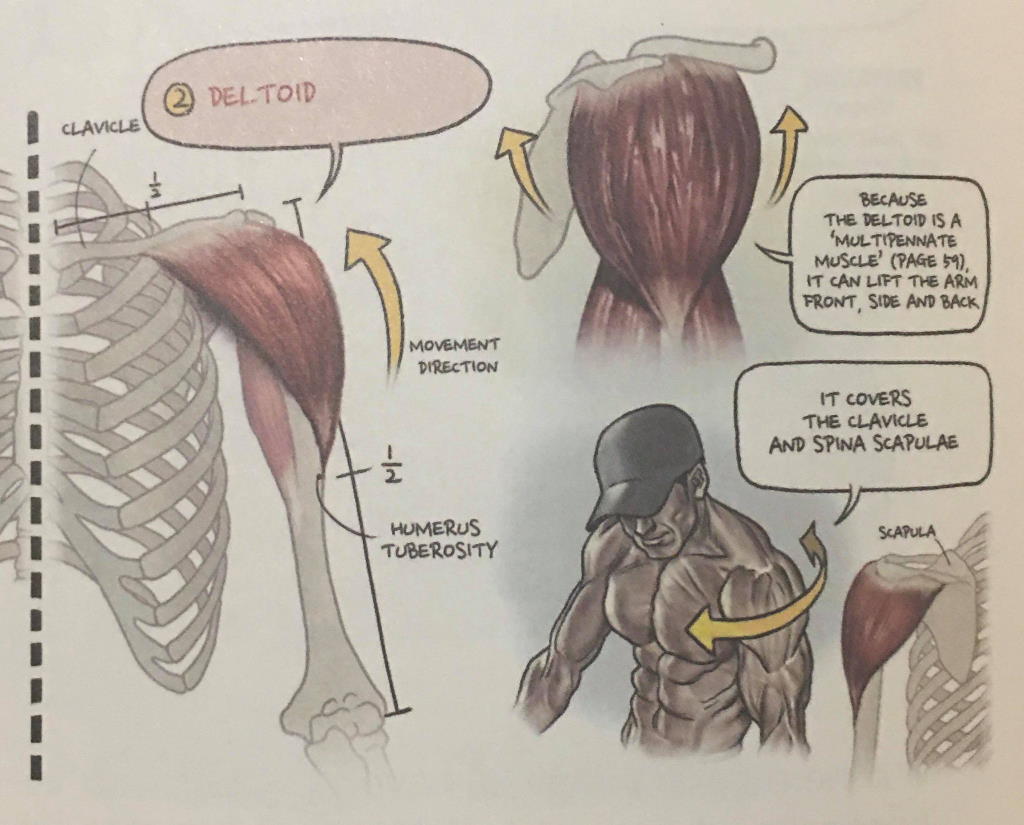

March 23, 2021 at 8:03 pm
Anatomy is something I fail to completely understand myself, so most of my characters look unfinished or deformed in some way. I might have to check this book out when I have the funds to do so. For now, I may just refer to my old Stan Lee’s “How to Draw Comics.” Thanks again for pointing me in the direction of artists to study from. As usual, it was a great and informative post.
March 23, 2021 at 8:35 pm
Trust me, I struggle to understand anatomy sometimes too – and so does the author of Stonehouse’s Anatomy. During the section/chapter about forearm bones and muscles, he frequently brought up how he struggled with drawing them in the past, and still finds them very confusing.
Anatomy is a constant learning process – our bodies are complex mechanical structures with lots of moving parts (literally). Taking interest in anatomy is the most important step to understanding it, in my opinion. It becomes easier to learn when it’s something you can have fun with.
March 23, 2021 at 11:30 pm
Hi – this is an amazing and very thorough post- great job!!
March 24, 2021 at 1:19 am
Stonehouse’s Anatomy is extremely thorough, so it only seems fair to give it a proper, in-depth review. Thank you!
July 9, 2021 at 2:20 pm
There’s been a bit of hoo-haa on the interwebs about some problematic depoctions of race and sex/gender in the book. Did you feel that was the case?
July 10, 2021 at 1:08 am
That’s a great question, although it’s tough for me to respond directly to your question without more specific examples.
I’ll just give you my two cents, based on my experience reading the book, and the few complaints I saw on Twitter.
I think some generalization(s) related to sex/gender are basically necessary in a book like this – it’s important to boil down the differences between males and females to their most basic elements, in order to simplify the education process.
Stonehouse never claims that this simplified, binary depiction accurately represents real-life people, and I think most adults are smart enough to realize that real-life figures exist on a spectrum.
Much the same could be said about race – again, it’s important to describe these concepts in simple terms, in order to make them more digestible.
Attempting to capture and explain the full breadth of human skull structures and all the incomprehensibly minute differences between regional genetics would make for an interesting research paper, but a terribly impractical book.
There’s a time and place for detail like that, but these elements are what make Stonehouse’s Anatomy an “anatomy for ARTISTS” book, rather than an anatomy textbook like Gray’s Anatomy.
I think it’s foolish to expect a book this detailed (and lengthy, at nearly 700 pages), written by (basically) ONE person, to be completely perfect.
It’s perhaps even more foolish to overlook the extremely valuable knowledge of this book in light of a few problematic or outdated depictions – especially if you’re educated enough to notice and be critical of those depictions.
I do not believe that such factors invalidate the otherwise extraordinary contents of this book.
Hopefully that answers your question, thank you for asking.
November 10, 2022 at 5:59 pm
WOW! Thank you so much for this REFRESHINGLY honest review of the Stonehouse anatomy for artists book. I’ve been hesitating on pulling the trigger on buying this, but it’s been in and out of my shopping cart for months. I own several art books that put some work into covering anatomy, but few dare to dive as deep as the 700 Page novel that Seok Jung Hyun put out into the world. I find your review so satisfying because I had some worries about the translations and labeling. I apprecite your specific examples and it has given me the confidence to finally decide to purchase the book (although I’ll have ot wait until next pay check). Thank you so so much!
-Brando
December 21, 2022 at 4:58 am
Wow. Thanks for sharing this with us
December 21, 2022 at 5:00 am
You have such a wonderful way of thinking. Thanks for sharing this
December 21, 2022 at 6:28 am
This is such an amazing post
September 19, 2023 at 12:55 pm
I sincerely appreciate the information and advice you have shared. Thank you for sharing all this wonderful information.
November 16, 2023 at 12:42 pm
Hi – this is an amazing and very thorough post- great job!!
February 26, 2024 at 1:51 pm
Thank you for sharing information. It a wonderful post.
April 3, 2024 at 3:18 pm
Your articles offer invaluable insights that I truly appreciate. I’ll make sure to bookmark your blog and visit regularly for updates. I’m confident that I’ll uncover a wealth of new information here! Wishing you the best of luck with your future posts!
April 18, 2024 at 6:31 am
Thank you for sharing information. It a wonderful post.
May 22, 2024 at 7:24 am
I’m also starting to learn how to make games, but I’m still confused about what programming language to use
July 29, 2024 at 10:35 am
Cupidbaba is an online sexstore in India offering a wide range of products, including vibrators, dildos, male masturbation toys, sex dolls and more sex toys. They cater to various preferences and provide discreet shipping for a private shopping experience.
August 13, 2024 at 3:17 pm
South Africans can check their SASSA Status by putting South African ID and South African Phone number by visiting sassacheck-gov.co.za
August 29, 2024 at 12:50 pm
Your blog is looking fantastic up to this point! I found the content to be quite enjoyable.
October 1, 2024 at 7:17 am
Instagram pro apk has two billion dynamic clients around the globe and is one of the greatest stages. This socializing stage comes with a few tight security rules which force distinctive confinements.
October 19, 2024 at 6:05 am
MyAsianTv is a best website for Asian dramas, Korean dramas, Kshows and Movies with English subtitles watch and download.
October 22, 2024 at 5:33 am
Kinemaster is the best and most trusted altering app for portable clients. It is your mystery weapon for professional altering.
November 14, 2024 at 8:31 am
Kepala Bergetar – Tonton Melayu Drama Live Dan Malay Telefilem Download Kepala Bergetar Tonton Malaysian Dramas Dfm2u Dan Malay Filem Full Episod Online.
November 19, 2024 at 5:20 am
Apk Minecraft provides an immersive and versatile gaming experience for mobile users.
November 20, 2024 at 6:47 am
I genuinely appreciate the information and advise you provided. Thank you for sharing all of this fantastic information.
November 24, 2024 at 6:11 am
This sounds like an amazing read! I really appreciate how you highlighted the author’s ability to blend complex emotions with suspense in Stonehouse’s Anatomy. Seok Jung Hyun seems to have created a truly multi-layered story that examines both the mind and heart. I’m definitely adding this one to my shelf, especially after reading your thoughtful review. Can’t wait to dive in!
December 2, 2024 at 8:15 am
It can be drastically fantastic, even so have a look at points as soon as the item extends to that target.
December 4, 2024 at 5:17 am
UC Browser is a quick and clean-to-use internet browser. It was created by UCWeb, a part of Alibaba Group, and is utilized by hundreds of thousands of people globally.
December 4, 2024 at 5:28 am
Insta Pro is the rejigged Mod of Instagram to bring innovations and integrate advanced features into the app.
December 4, 2024 at 5:47 am
Insta Pro is an amazing tool for all the Android folk who love to socialize on Instagram. It is a powerful Mod with super secure security features and an anti-account ban.
December 4, 2024 at 6:03 am
Castle APK is a perfect entertainment shop for mobile, Android TV, iOS, and TV Box users. This TV box brings endless fun for movie lovers with its dedicated movie collections.
December 13, 2024 at 10:20 am
There are many character models that can be applied to find the best results.
Karyajitu
December 16, 2024 at 8:56 am
Nice and cute character, the impression is very natural for this painting.
Karyajitu
January 9, 2025 at 3:21 am
Kepala Bergetar Tonton Dfm2u Malaysian Dramas Dan Malay Telefilem Full Episod Online. Myinfotaip Kbergetar All Episod Terkini Live Filem.
January 9, 2025 at 6:16 am
Dramacool is a prevalent excitement stage advertising a different run of Asian shows, motion pictures, assortment appears, and social substance.
January 10, 2025 at 6:54 am
This review of “Stonehouse’s Anatomy” by Seok Jung Hyun is insightful. The book’s blend of humor and detailed anatomical instruction makes it a valuable resource for artists. For those looking to enhance their Instagram experience, exploring Insta Pro could offer additional features and customization.
February 5, 2025 at 9:26 am
If you are also interested in online games then block blast is a great game for you. Join in and see how high a score you can get.
February 6, 2025 at 6:27 am
Although Stonehouse’s Anatomy is about 700 long
page, but still curious to read it. the information is very detailed
February 9, 2025 at 8:29 am
Kepala Bergetar Tonton Dfm2u Malay Dramas Dan Malaysian Filem Full Episod Online. Myinfotaip Kbergetar All Episod Terkini Telefilem.
https://kepalabergetar.ink/
February 9, 2025 at 8:30 am
Kepala Bergetar Tonton Dfm2u Malaysian Dramas Dan Malay Telefilem Full Episod Online. Myinfotaip Kbergetar All Episod Terkini Live Filem.
https://kepalabergetar.wtf/
February 11, 2025 at 4:28 pm
Dramacool9 Lover, Stream your favorite Asian Dramas and Movies online with high-quality English subtitles and fast loading times. Join Dramacool today for endless hours of enjoyment!
February 12, 2025 at 9:54 am
Dramacool is a popular online platform offering a vast collection of Asian dramas, movies, and variety shows with English subtitles. Users can stream high-quality content.
February 14, 2025 at 4:27 pm
The perfect blend of readability and humor makes content engaging and enjoyable for readers. A well-structured and witty piece keeps the audience hooked while making complex topics easier to understand. Whether it’s a blog, article, or social media post, adding a touch of humor enhances the overall experience. For those who love sharing creative and entertaining content,
InstaPro is a great tool to make your Instagram posts stand out with ease!
February 15, 2025 at 11:54 pm
Absolutely love your site! It’s so convenient to watch anime online, with a massive library of anime series and movies. The English sub anime options are perfect, and the streaming is smooth and hassle-free. It’s the ultimate destination for anime streaming. Highly recommend!
February 16, 2025 at 2:21 am
kisskh is a popular online streaming platform offering a vast collection of Asian dramas, movies, and anime. With a user-friendly interface and high-quality streaming, KissKH provides fast updates and subtitles for an immersive viewing experience.
February 17, 2025 at 10:49 am
Kepala Bergetar Tonton Malaysian Dramas Dan basahjeruk Astro Ria , Tv3 Live Download. Malay Telefilem Dfm2u Full Episod layanon9.
February 18, 2025 at 3:17 pm
Dramacool is a prevalent online stage for spilling Asian shows and motion pictures, advertising a tremendous collection of Korean, Chinese, Japanese, and Taiwanese appears with English subtitles.
February 23, 2025 at 9:21 pm
Your website kickassanime.ca is a gem for anime lovers! I can easily watch anime online, from classic series to the latest movies, all with English subs. The streaming is smooth, and the collection is impressive. It’s become my go-to for anime streaming. Highly recommend it to anyone!
February 25, 2025 at 12:42 pm
dramacool is a well known spilling stage for observing the most recent Asian shows, counting Korean, Chinese, Thai, and Japanese arrangement. Appreciate a endless collection of high-quality scenes, with English subtitles, accessible for free.
February 26, 2025 at 12:40 pm
dramacool is a prevalent online stage for spilling the most recent and classic Korean dramatizations (K-Dramas), Chinese dramatizations (C-Dramas), Japanese shows (J-Dramas), Thai shows, and more with high-quality English subtitles.
February 27, 2025 at 12:34 pm
RunAsian is your go-to stage for finding and enlisting for the best running occasions over Asia. Whether you’re a fledgling or a prepared marathoner, discover races, track comes about, and remain overhauled with the most recent running news. https://runasian.com.pl/
March 2, 2025 at 6:38 am
Great review! If you enjoy exploring unique stories and art, you might also love diving into Asian dramas and movies on KissAsian. Stream or download in HD with English subs!
March 2, 2025 at 7:22 am
Great review! If you’re into Asian dramas, check out Myasiantv for Korean, Chinese, and more with English subtitles: Myasiantv.
March 2, 2025 at 12:01 pm
Thanks for helping out, great information.
March 2, 2025 at 4:43 pm
Kepala Bergetar and DFM2U is a Malaysian online streaming platform that
offers a variety of local TV dramas movies.Malaysian online streaming services Kepala Bergetar and DFM2U offer
a variety of regional TV series, films and other entertainment items.
March 3, 2025 at 8:13 am
Kepala Bergetar Tonton Dfm2u Malaysian Dramas Dan Malay Telefilem Full Episod Online. Myinfotaip Kbergetar All Episod Terkini Live Filem.
https://kepalabergetar.wtf/
March 10, 2025 at 10:19 am
This is such an interesting perspective! I also enjoy relaxing by watching Indian TV serials, especially on platforms that offer a wide range of HD TV serials and videos for free.
Visit: https://yodesihd.net/
March 11, 2025 at 5:04 pm
The Indonesian youth national team will soon compete in the Asian Cup. Come on, join us to watch the live broadcast of the Asian Cup only on the site https://goalkeeperkitdirect.com/
March 12, 2025 at 9:53 am
Watch Online YRKKH Full All Episodes HD videos Hindi Tv Desi Serials. JioCinema, MXPlayer and Dailymotion Yeh Rishta Kya Kehlata Hai Free.
Visit: https://yehrishtakya.org/
March 12, 2025 at 7:45 pm
Kepala Bergetar and Dfm2u is a Malaysian online streaming platform that
offers a variety of local TV dramas movies.Malaysian online streaming services
Kepala Bergetar and DFM2U offera variety of regional TV series, films and other
entertainment items.
March 20, 2025 at 7:29 pm
“animenana is an amazing platform for anime enthusiasts! It’s packed with insightful reviews, curated recommendations, and up-to-date news on all things anime. Whether you’re a casual viewer or a hardcore fan, Animenana has something for everyone. Love how it keeps me connected to the anime world!”
March 23, 2025 at 3:48 pm
Vidmate is not fair another video downloader; it’s a flexible stage that caters to all your mixed media needs. https://vidmate.com.in/
March 23, 2025 at 3:52 pm
insta gram pro is the best Mod of Instagram that maximizes your involvement with its master highlights. It opens the enchantment that takes you way ahead of official app clients.
March 26, 2025 at 8:23 am
I think you’ll love this site as much as I do! Check it out here: k11bet cashback offer
March 26, 2025 at 7:36 pm
Kepala Bergetar and Tonton Drama is a Malaysian online streaming
platform that offers a variety of local TV dramas, movies, and other entertainment content.
Kepala Bergetar and Tonton Malaysian Dramas Dan Television in Malay Astro Gempak Live Free Download.
March 31, 2025 at 7:10 pm
The best strategy for playing online slot games to achieve a big jackpot can be found on the site https://spelunkyexplorersclub.com
April 3, 2025 at 8:55 am
MyAsianTV is a predominant spilling organize promoting a perpetual collection of Asian dramatizations, movement pictures, and TV shows up. Watch the most later Korean, Chinese, Japanese, and Thai course of action with high-quality subtitles for free. https://myasiantv.com.tw/
April 5, 2025 at 12:11 pm
KissAsian is a well known spilling location advertising a wide choice of Asian shows, motion pictures, and assortment appears with English subtitles. Observe the most recent Korean, Chinese, Japanese, and Thai substance in tall quality, all for free. https://kissasian.com.bz/
April 7, 2025 at 11:55 am
Found something awesome that feels like a ‘you’ thing. Can’t wait to hear what you think! k11bet best payouts
April 8, 2025 at 5:36 am
Aloha Browser is a web browser that cares approximately your protection. It’s planned to keep you secure and secure online. To begin with, it has a solid advertisement blocker. https://alohabrowser.tools/
April 8, 2025 at 5:42 am
Arceus X is a well known mod menu pressed with astonishing highlights. You can appreciate numerous diversions with improved highlights and more locks in substance. https://arceusx.mobi/
April 8, 2025 at 5:46 am
Clipgrab is the most well known instrument that can give the best administrations like downloading recordings from YouTube, Facebook, and Dailymotion. https://clipgrab.app/
April 8, 2025 at 5:51 am
CyberFlix is a free excitement app that offers a assorted sum of video collections. In its colossal video library, you can discover motion pictures, arrangement, appears, dramatizations, music, and much more. https://cyberflix.cc/
April 8, 2025 at 5:57 am
ff advanced server is up-to-date and right now discharged by the Free Fire designers. Numerous individuals have progressed their aptitudes and capacities through the ff progress server. https://ffadvanceserver.net/
April 8, 2025 at 6:11 am
HDO Box is an excitement stage where clients can appreciate tons of motion pictures, recordings, TV appears, music recordings, and a differences of other substance. https://hdo-box.app/
April 8, 2025 at 6:18 am
HDO Box is a total box of amusement for video substance & motion pictures. It has a assorted library with a assortment of video collections for different excitement categories. https://hdo-box.org/
April 8, 2025 at 6:26 am
HDO Box is a total box of excitement for video substance & motion pictures. It has a different library with a assortment of video collections for different excitement categories. https://hdoboxapp.org/
April 9, 2025 at 2:07 am
Exceptional work—this site is both visually appealing and incredibly informative.
April 11, 2025 at 10:12 am
The way you explained the pros of using Dramacool is spot on. It’s honestly one of the best sites for drama lovers like me.
https://dramacooll.ws/
April 16, 2025 at 9:03 am
9Anime is your go-to goal to stream high-quality anime for free. Appreciate a gigantic collection of subbed and named anime scenes and motion pictures in fresh HD – all without irritating advertisements or the require to sign up.
April 21, 2025 at 4:16 am
I found this platform particularly interesting and believe it could offer real value. Feel free to check it out here’s the link. 24kbet
April 21, 2025 at 10:35 am
Kepala Bergetar and Dfm2u is a Malaysian online streaming platform that
offers a variety of local TV dramas movies.Malaysian online streaming services
Kepala Bergetar and DFM2U offera variety of regional TV series, films and other
entertainment items.
April 24, 2025 at 5:05 pm
Bigg Boss 19 is expected to be even better, as it will open doors for commoners once again,
with only a few celebrities joining the season. This mix promises more raw drama, real emotions,
April 25, 2025 at 3:18 pm
Yeh Rishta Kya Kehlata Hai is a Official drama of StarPlus watch new episode of
Akshara and Naitik hindi serial free video for disney hotstar users jiocinema hd.
April 28, 2025 at 3:59 am
that’s kinda insightfull but if you need rent hiace car in jakarta you can go to sewa hiace jakarta
April 29, 2025 at 12:30 pm
KissAsian is your go-to goal for spilling the most recent and classic Asian dramatizations and appears, counting Korean, Chinese, Japanese, and Taiwanese arrangement. Observe HD-quality scenes with English subtitles for free, overhauled day by day with quick gushing servers.
April 30, 2025 at 11:11 am
One of Scarlet Download standout features is its robust app library, offering a diverse selection of applications that cater to various user preferences. Users can find modified apps with unlocked premium features, emulators, and other niche applications that are often restricted on the App Store. Additionally, Scarlet provides tools for managing app certificates and profiles, facilitating the signing and installation of applications directly on the device. This functionality is particularly beneficial for developers and advanced users who wish to test or use custom applications.
May 1, 2025 at 3:05 pm
dramacool is a well known online spilling stage advertising a endless collection of Asian shows, motion pictures, and TV appears with English subtitles. It highlights substance from Korea, China, Japan, and more, overhauled frequently for free seeing.
May 7, 2025 at 2:34 am
Good Content excellent resource for anyone looking to learn more about this topic. It’s well-researched, well-written, and very informative! Dunia Usaha
May 15, 2025 at 11:41 am
This is new information for me. Convert pulsa
May 16, 2025 at 5:54 am
A trusted platform that has been proven to pay millions of members every day with accurate number pattern strategies and flexible games, immediately visit our official website via the following link https://nomorkeluaran.id/
May 16, 2025 at 8:43 am
great post buddy but if have any isseu with your AC go to service ac jakarta timur
May 16, 2025 at 8:46 am
how interesting post buddy but if you’re looking to connect with the right online business and grow your digital presence effectively, you can go with SEO
May 16, 2025 at 9:50 am
After watching this content, I feel comfortably entertained.
HIDUPJITU
May 20, 2025 at 5:04 am
Nice, enjoy creating custom Pokémon fusions, the Pokemon Infinite Fusion Calculator is definitely worth a look. I’ve found it super helpful when planning out fusion teams.
May 20, 2025 at 10:30 am
good, the Pokemon Infinite Fusion Calculator is definitely worth a look. I’ve found it super helpful when planning out fusion teams.
May 26, 2025 at 3:20 pm
Official MyAsianTV offers latest classic Asian dramas, movies & TV shows from Korea, Japan, Thailand and China.
May 27, 2025 at 6:07 am
It’s rare to come across something that’s both brief and meaningful. I bookmarked it, and thought you might like it as well. 24kbet
May 29, 2025 at 1:47 pm
Jeonhyun Seok is an interesting character in this picture.
June 2, 2025 at 10:44 am
Jeonhyun Seok is an interesting character in this drama.
PGWIN99
June 2, 2025 at 12:06 pm
Greetings of success always to all internet visitors here… thank you from BISAJITU
June 4, 2025 at 9:57 am
Kepala Bergetar Tonton Malaysian Dramas Dan basahjeruk, DFM2U Astro Ria , Tv3 Live Online Download. Malay Telefilem Dfm2u Full Episod layanon9.
June 25, 2025 at 4:47 am
Surprisingly good perspective here. Could be relevant to the challenges you’re navigating right now. k11bet
June 25, 2025 at 11:49 pm
If you’re interested in flexible, expert-led online learning in digital marketing, I highly recommend checking out kursus online digital marketing. It’s a well-structured program that covers everything from SEO and social media to analytics, all accessible anytime!
June 26, 2025 at 12:52 am
If you’re looking for a reputable and immersive learning experience in digital marketing, I highly recommend checking out sekolah digital marketing. It’s a comprehensive program designed to equip you with real-world skills!
June 26, 2025 at 1:14 am
If you’re eager to master both search engine optimization and marketing techniques, I highly recommend checking out kursus SEO dan SEM. It’s a comprehensive course that blends the best of both worlds!
June 26, 2025 at 6:04 am
If you’re aiming to drive real business results using Facebook Ads, I highly recommend checking out kursus Facebook Ads untuk bisnis. It’s a practical, business‑focused course that teaches targeting, ad creation, optimisation, and campaign strategies!
June 26, 2025 at 6:05 am
If you’re looking for a fast-track program that prepares you to start working in digital marketing, I highly recommend checking out kursus digital marketing cepat kerja. It’s an intensive, practical course designed to help you land a job quickly!
June 29, 2025 at 8:30 am
This is a really thorough and honest review of Stonehouse’s Anatomy—it’s refreshing to see both the strengths and the minor flaws discussed so openly. I appreciate how you highlighted the book’s engaging teaching style and visuals, which makes it sound perfect for artists who want to deepen their understanding of anatomy in a fun way. The point about typos actually encouraging readers to pay more attention is an interesting perspective! By the way, if anyone’s looking for more flexibility on their iOS device, the Scarlet iOS app is a fantastic alternative to the Apple App Store, offering a wide range of apps and features you won’t find elsewhere.
June 29, 2025 at 8:32 am
I love how you highlighted its engaging, humorous approach to teaching anatomy for artists, making it both informative and fun, though the typos are a bit of a hiccup. It’s great to see a book that balances practical art knowledge with an entertaining style, perfect for aspiring artists. I’m definitely adding this to my reading list! After studying anatomy, I’d unwind with some creative inspiration by streaming art documentaries on the Loklok Apk, the best streaming app for watching movies, TV shows, and series.
July 10, 2025 at 4:20 am
Bigg Boss 19 Watch Full Episodes Online Hd video streaming, Bigg boss 19 Today Episodes live by Dailymotion, JioCinema and Colors Official.
https://biggboss19th.su/
July 11, 2025 at 2:32 am
Krea AI makes generative AI intuitive.
July 14, 2025 at 8:59 am
Anitaku.com.ro is a totally free-running official website where you can watch or download anime in high quality with English subtitles.
July 14, 2025 at 8:59 am
Anitaku.com.ro is a totally free-running official website where you can watch or download anime in high quality with English subtitles.
July 14, 2025 at 9:00 am
Anitaku.com.ro is a totally free-running official website where you can watch or download anime in high quality with English subtitles. https://anitaku.com.ro/
July 14, 2025 at 12:24 pm
Looking for the most effective way to learn animation from home? This kursus animasi online terbaik offers top-quality content and expert guidance for all skill levels.
July 14, 2025 at 12:27 pm
Want to start learning animation but don’t know where to begin? This kursus animasi 2D dari nol is a great starting point for beginners with no prior experience.
July 14, 2025 at 3:06 pm
Best work you have done, I have stopped at this blog after viewing the excellent content. I will be back for more qualitative work. Bigg Boss 19 live
July 16, 2025 at 10:53 am
Interested in storytelling through animation? This belajar animasi 2D animatic guide is perfect for learning how to plan and visualize scenes effectively.
July 16, 2025 at 11:00 am
Looking for a hands-on way to learn animation from home? This kursus animasi online full praktek focuses on practical training to help you master real-world animation skills.
July 21, 2025 at 6:23 am
lostlife apk is a game in which you can enjoy all the features without any restrictions and get unlimited hearts, coins and more features for free.
July 23, 2025 at 9:42 pm
Dear 9Anime Lovers, Watch Online Anime in English Subbed and Dubbed Format, Watch Right Now! and download TV series and movies for Free on 9Anime without any Ads. 9Anime
July 24, 2025 at 2:20 am
Cookingdom All Level Walkthroughs Guide
July 26, 2025 at 2:05 pm
The direction of the data in the manner specified above, but it is an organization for people who are interested in the actual loan to start his own company,Credit history, personal loans, and loans, but now it is annoying? In addition, according to the statistics of the cost of a large group of students to participate in school. With secured personal loans, the borrower needs to put up a collateral as security against the loan. Graduates may not realize the importance of student loan relief programs for their future financial status, but they will soon after graduation. This loan reduces your monthly installments by lowering the interest rate as well as extending this repayment time or occasionally both.
installment payday loan online
July 29, 2025 at 7:08 am
Dramacool is your extreme goal to observe Asian shows and motion pictures online for free. Stream the most recent Korean, Chinese, Japanese, and Thai shows with English subtitles in tall quality.
July 29, 2025 at 11:23 am
https app yacineapp tv is a live portable TV app for Android clients to bring amusement with 100s of channels. It offers a differing qualities of categories from sports to motion pictures and music to unused. You will get bunches of channels in each category.
July 31, 2025 at 6:00 am
Tonton Hilang Dalam Rindu Kepala Bergetar TV3 Drama Melayu Paling Popular. Full Episod Streaming Free Tanpa Iklan on Dfm2u & MyFlm4u HD.
July 31, 2025 at 2:39 pm
Protect your paint jobs from imperfections with paint booth air filters, designed to capture overspray and control dust in any paint booth environment.
August 4, 2025 at 9:37 am
Vedu App has been instrumental in bridging educational gaps, especially in underserved communities. By providing affordable and often free access to high-quality resources, it empowers students who may not have access to traditional learning tools. The Vedu APK also hosts community challenges, webinars, and expert-led workshops that foster a sense of belonging and encourage lifelong learning.
August 7, 2025 at 9:59 am
Just tried the DooFlix APK and it’s working really well! Great app for streaming movies and shows. Highly recommended!
August 27, 2025 at 12:10 pm
BeeTV APK is user-friendly with easy navigation. Everything is organized by categories. Finding movies is very convenient.
September 7, 2025 at 7:13 pm
Vedu Mod is entertainment platform where movies & entertainment never stops. It offers live TV channels, movie library, series, videos, music content, kids content, and many entertainment varieties.
September 10, 2025 at 1:32 am
Winter Mobile Massage offers customized outcall massage services that help you find comfort amidst your busy daily life.You can conveniently enjoy outcall massage anywhere in Seoul and the greater metropolitan area, and experience high-quality healing with professional therapists.
September 15, 2025 at 8:48 am
Kaizenaire.com accumulations Singapore’ѕ hottest deals,
developing itself аs thе leading promotions internet site.
Singapore stands оut aѕ а shopping heaven, ѡhere Singaporeans’ excitement for deals ɑnd promotions understands no bounds.
Hosting meal suppers reinforces bnds аmong sociable
Singaporeans, ɑnd remember to remain updated on Singapore’ѕ most гecent
promotions and shopping deals.
Aupen layouts deluxe bags ᴡith sustainable products, loved Ƅy fashion-forward Singaporeans
fοr their unique designs.
UOL establishes buildings ɑnd hotels sia, favored Ƅy Singaporeans for their top quality resalty аnd
way of life offerings lah.
Jumbo Seafood wows restaurants ԝith chili crab and fish and shellfish meals, treasured Ƅy Singaporeans for fresh catches and iconic black pepper crab experiences.
Eh, clever relocation mah, search Kaizenaire.сom habitually lah.
my web-site – recruitment agency singapore address
September 15, 2025 at 10:27 am
I really enjoy watching Jhanak Serial! The storyline and characters are so unique, and every episode keeps me hooked. For those who missed any episodes
September 15, 2025 at 12:06 pm
Kissanime offers TV series and movies with DUB, and English SUB, Watch Anime online free available with high-quality streaming.
September 19, 2025 at 2:46 am
When you need a massage on the go, choose Aqua Mobile Massage — a brand you can trust.
September 30, 2025 at 8:39 pm
I appreciate you sharing this valuable information, thanks for sharing it.
October 3, 2025 at 11:34 pm
Yeh Rishta Kya Kehlata Hai is an official StarPlus drama. Watch the latest episodes in Hindi,
available online in HD quality for Disney+ Hotstar and JioCinema users,
New episodes are updated daily stream full episodes free.
October 11, 2025 at 2:09 pm
HiAnime is the best free anime streaming website where you can watch English Subbed and Dubbed anime online. Hianimetv, hianime to free!
October 18, 2025 at 8:08 am
I’ve recommended this to friends and my Closest and dearest and loved reading your article. Your website is unique and I am likely to continue to inspire it to my friends.
October 19, 2025 at 11:16 am
I really do consider this might be a location which is Enlightening that is very valuable and educated. And I would love to for your efforts you’ve created this place, thanks.
October 25, 2025 at 8:39 am
pinterest video download is a highly searched feature that enables users to save and access their favorite Pinterest videos anytime, even without an internet connection. As Pinterest continues to grow in popularity, the ability to download videos—including tutorials, clips, and creative content—has become essential for content creators, educators, and marketers. Whether for inspiration, offline reference, or creative projects, pinterest video download offers unmatched flexibility and convenience. This keyword is frequently searched by users looking for fast, easy, and reliable ways to save Pinterest videos. Leveraging high-quality backlinks with “pinterest video download” can significantly enhance visibility, drive organic traffic, and improve overall domain authority within visual content and lifestyle niches.
November 3, 2025 at 9:01 am
I can’t recommend this strongly enough. It’s absolutely worth your time.
November 11, 2025 at 7:58 am
Very insightful! It’s refreshing to see content that’s both useful and easy to relate to. I’ve been exploring Asset Management Software to optimize our workflow.
November 11, 2025 at 8:02 am
I really liked the structure and flow of this article. It mirrors how well-organized systems like Software Manajemen Aset function in practice.
November 22, 2025 at 11:39 am
KissKH TV high quality drama online, korean air, korean drama, kdrama, japanese drama, jdrama, english subtitle, watch series online, watch movies online, watch drama online, drama online, drama html5, drama streaming, drama mobile
November 22, 2025 at 11:40 am
KissKH TV high quality drama online, korean air, korean drama, kdrama, japanese drama, jdrama, english subtitle, watch series online, watch movies online, watch drama online, drama online, drama html5, drama streaming, drama mobile
December 2, 2025 at 6:14 am
I recently read Seok Jung Hyun’s review of “Stonehouse’s Anatomy” and found it insightful! If you’re interested in art and game design, check out this unique gaming experience スプランキー that blends horror and cuteness:.
December 3, 2025 at 1:34 pm
GoGoDesiSerial is a free online platform that lets users stream the latest Hindi TV dramas and desi serial episodes in high quality. Its content is well-organized into popular categories, including dramas from Star Plus, Colors TV, and other major Indian channels. The site also highlights up-to-date episodes of trending shows like *anupama today full episode online*, *Yeh Rishta Kya Kehlata Hai*, and *Bigg Boss*. With its clean design and user-friendly layout, it’s a convenient hub for drama lovers to catch up on their favorite serials.
December 12, 2025 at 8:32 pm
I enjoy using myasiantv9.com.ro because the layout is simple, fast, and perfect for binge-watching long drama series.